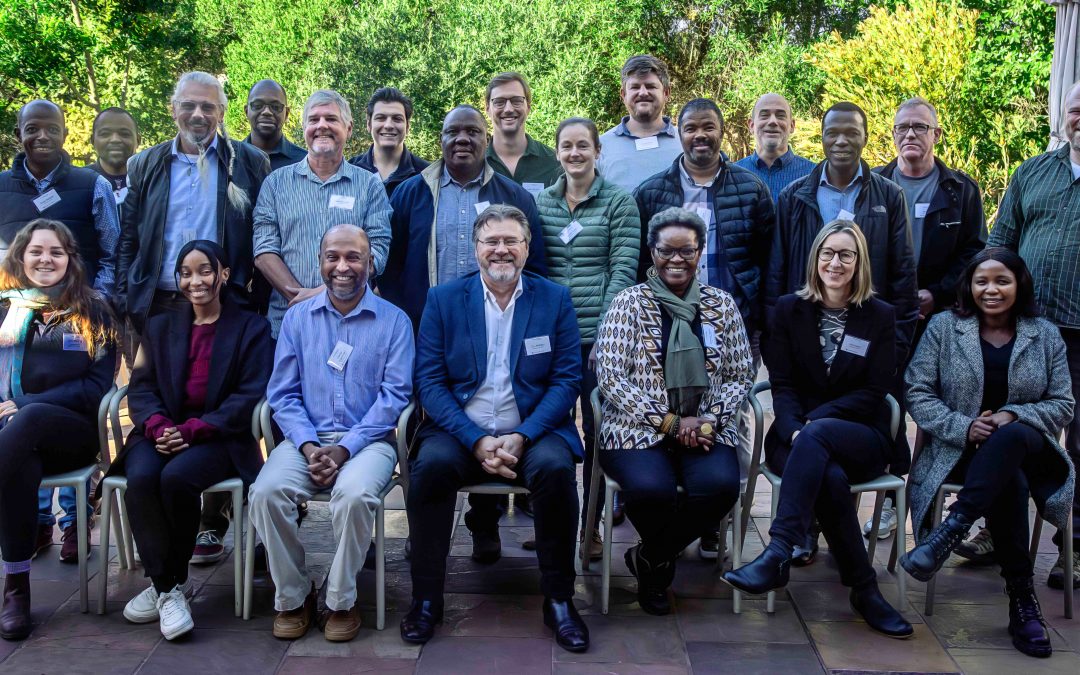“Africa’s arm has often been twisted to plant the wrong trees, for the wrong reasons, in the wrong places” – Prof Guy Midgley.
On 27 May 2025, various stakeholders met at STIAS in Stellenbosch to collaborate on the Southern African Trees for Climate Resilience project, funded by Lacuna fund – who supported the international attendees with travel and accommodation to the conference.
The purpose of the conference was to allow stakeholder engagement on the project approach and to present initial model output for the resilience of African tree species to a range of climate scenarios. The conference was an opportunity to refine and explore how to maximise the use of the model output, especially in the context of adaptation and mitigation response planning in Africa.
Stakeholders included members from the Department of Forestry, Fisheries and the Environment (DFFE), the JRS Biodiversity Foundation, the Council for Scientific and Industrial Research (CSIR), the Namfumu Conservation Trust, the Center for International Forestry Research (CIFOR) and World Agroforestry (ICRAF), Phyla Earth and the University of Namibia.
The project is an inter-faculty collaboration, between the SU Faculty of AgriSciences (Department of Conservation Ecology and Entomology), School for Climate Studies, and the School for Data Science and Computational Thinking. This transdisciplinary collaboration thus draws together diverse skills in agroforestry, biodiversity and climate change mitigation and adaptation science and policy.
The project aims to develop an extensive floristic database and associated analytical tool that uses species’ medicinal, food provision and other trait data, together with the trees’ climate relationships and growth characteristics for climate adaptation and mitigation planning. The use of the tool is intended to promote indigenous tree use for reforestation, regenerative agriculture, ecological restoration, human health and livelihood support, and urban afforestation programmes to adapt to and mitigate the impacts of climate change.
The novelty of the project lies in two main areas – firstly, the incorporation of plant physiologically based principles in climate niche modelling as a method of quantifying species climate resilience, and secondly, in the construction of a very large “data cube” that provides relatively easy access to users to the biophysical data sets for Africa needed to assess tree-based nature based solutions to climate change.
Professor Guy Midgley opened the stakeholder conference by contextualizing the tree planting dynamics in Africa, explaining how western ideologies of afforestation are out of touch with the availability of indigenous African tree species for reforestation where needed, especially in the context of changing climate patterns. He highlighted the need for vital processes, such as the impact of carbon dioxide increase on tree growth, to be included in climate niche modelling, which remains an important basis for assessing species resilience.
As explained by Prof Midgley, “Trees do not only respond to a changing climate in terms of increasing temperatures and changes in rainfall, they also respond to the increasing anthropogenic CO2 in the atmosphere.”
Throughout the day, timed sessions allowed for the key stakeholders to collaborate and engage on improving the project and give their valuable insights and inputs. Among those in attendance included DFFE’s Barney Kgope, Director of the Biodiversity Risk Management Department. Kgope commented that tree planting has become a “numbers competition”, prioritizing quantity of often non-indigenous trees over quality of intervention.
Dr Roeland Kindt (CIFOR-ICRAF) introduced a suite of open-access scientific resources that can complement and enhance the initiative, including the global datasets from TreeGOER, GlobalUsefulNativeTrees and EcoregionsTreeFinder.
The conference underscored the urgency and complexity of using southern African trees for climate resilience, and the need for science-driven, locally informed, and ethically guided strategies that prioritize Africa’s unique biodiversity and community needs in the global climate response. Delegates were agreeable to be further engaged as a community of practice, including in the application of the tool, as appropriate, and new funding proposals to further leverage this technology for the benefit of African ecosystems and biodiversity.
Watch this space!
(Photo credit: Henk Oets)


